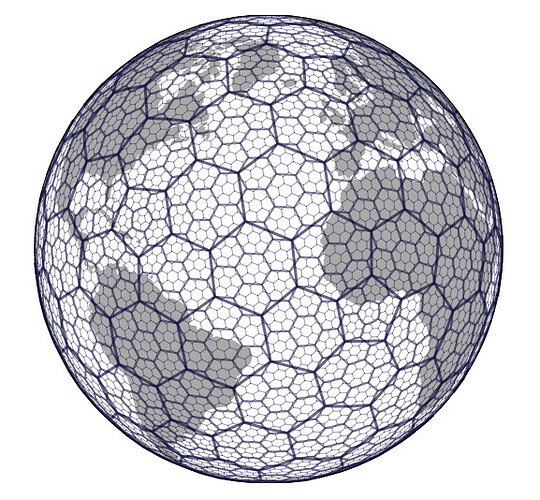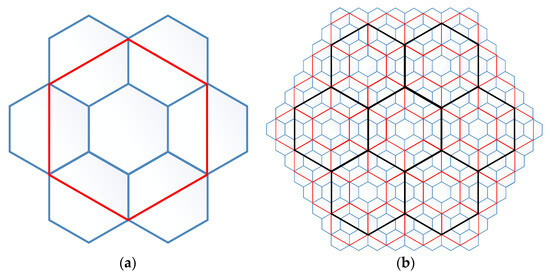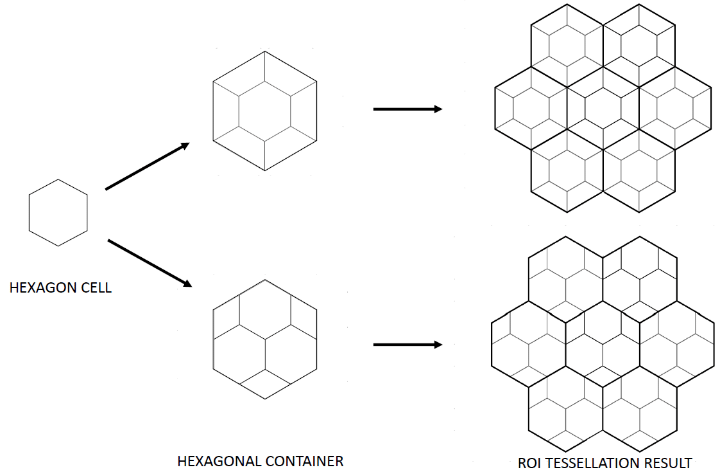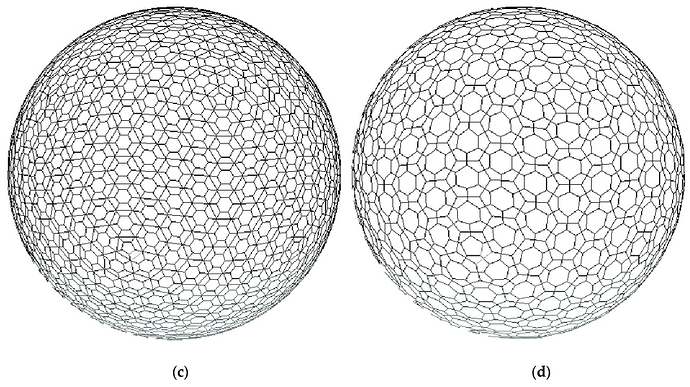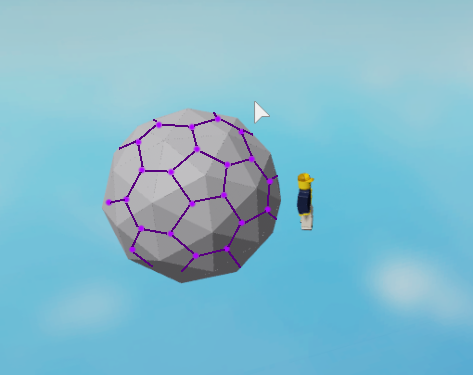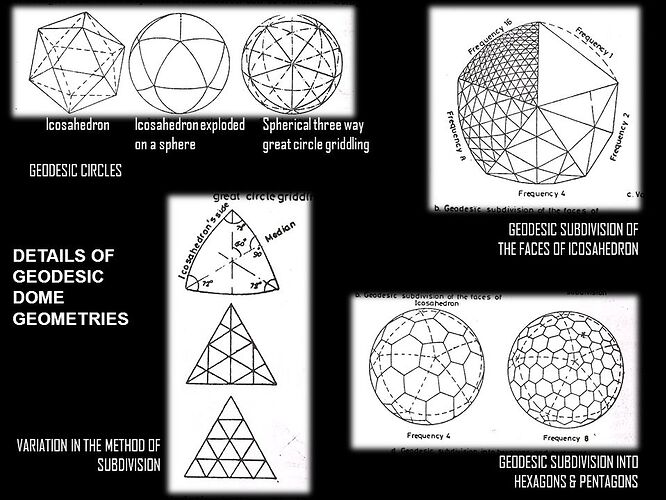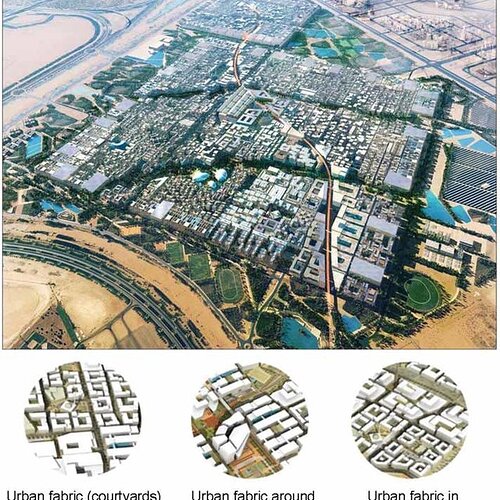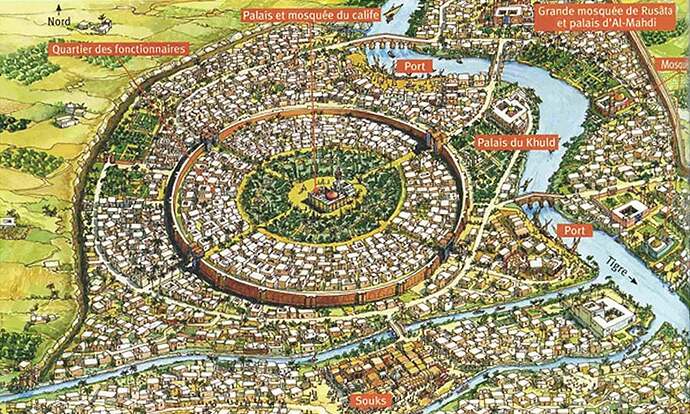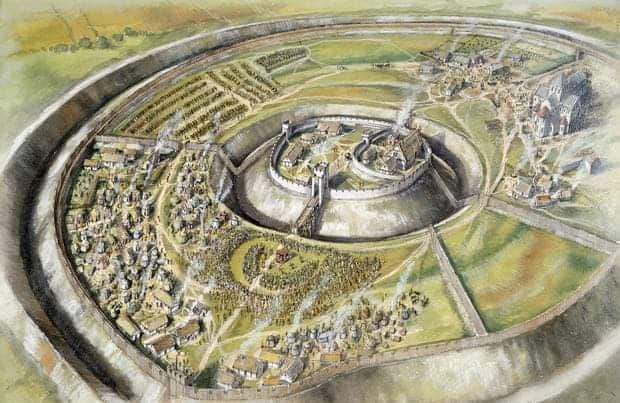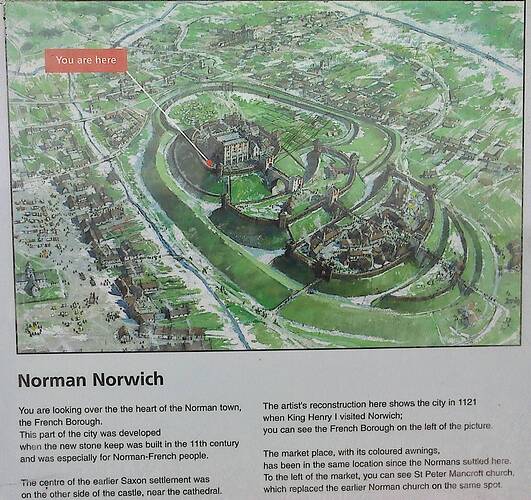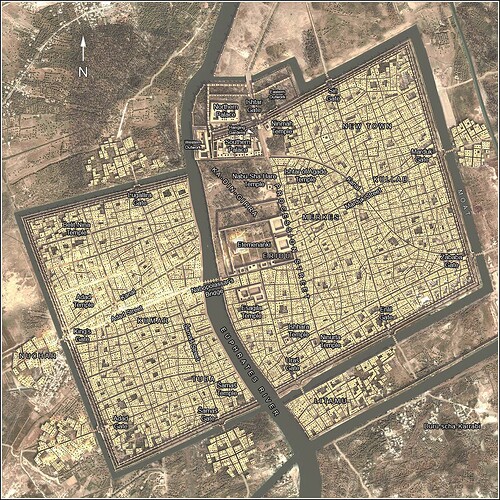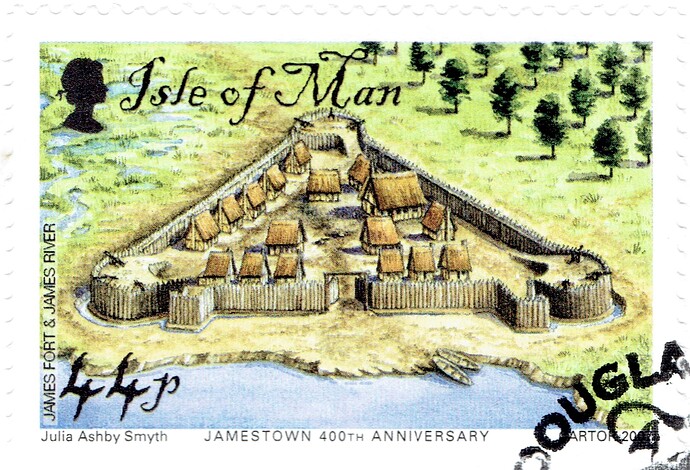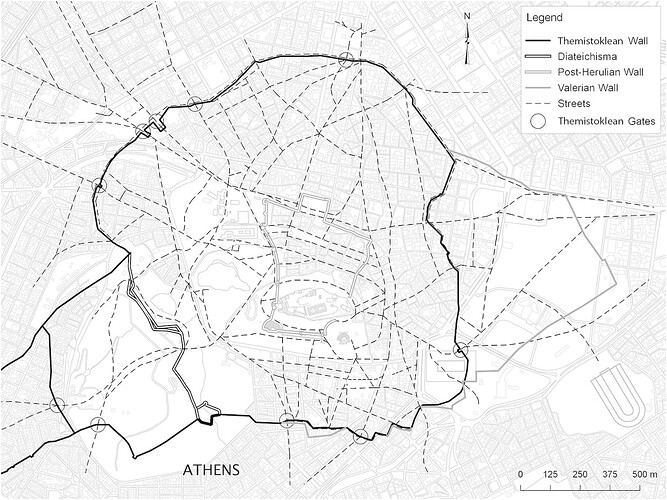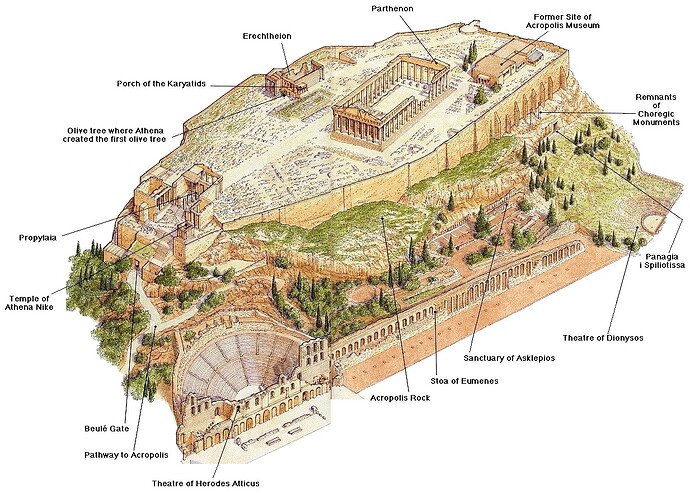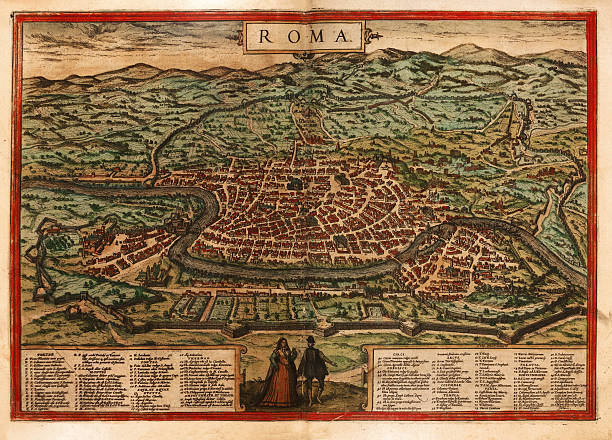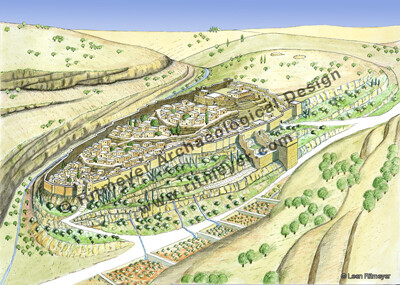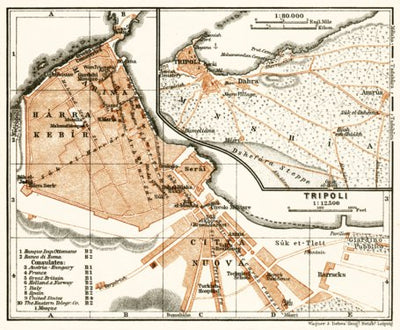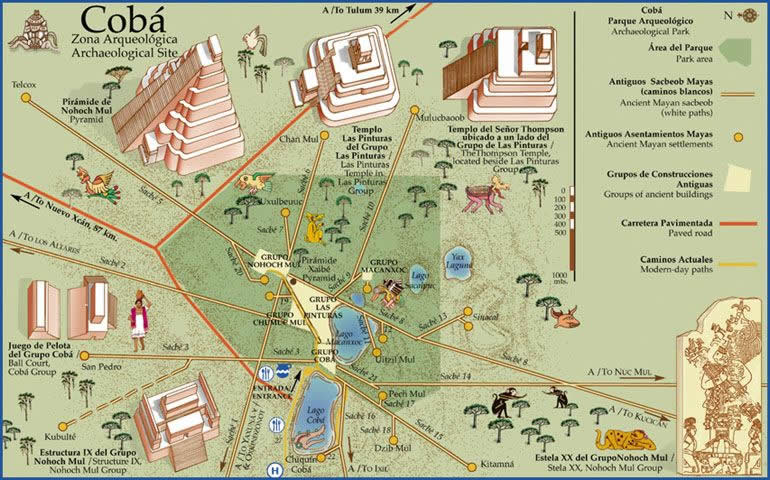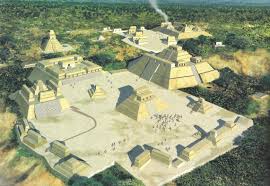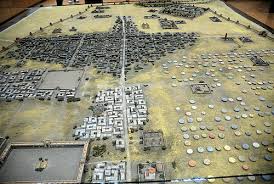I feel that this topic will be divisive enough to require a separate discussion from the rest of the world generation threads. Also, it is primarily a game design issue, and this can affect how the art assets are created so it would be best to get it right the first time.
The main question asked here is: what grid should the world use? Should it use a square grid, hex grid, other type of grid, or no grid at all (freeform)?
So far, it seems like the hexagonal (hex) grid has been the standout idea for the world grid. It is an obvious one, as it is what was chosen for the organelle and early multicellular editors. I think that these were good choices for those editors, but I do not think that enough evaluation has been done for what grid is best to use for the later stages and a premature selection could cause significant issues in the future.
The hex tiling has a few points going for it that are independent of any other considerations specific to the stages: it has already been chosen and implemented for some of the game stages, and it would be consistent to use it for all later stages. This could potentially save development effort and would have a coherent style across the game.
However, I think that these points for hex tilings are not enough to on their own to determine the world tiling without deeply considering how it would be actually used in the later stages.
The early stages from microbial to awakening will primarily be focused on interactions between organisms, and not on structures, so the choice of grid should not be a major, visible thing noticed by the player.
In the later stages when you start to build structures and cities are developed, from the end of awakening stage onwards, a world grid will become very transparent to the player. Any buildings built would be very obviously constrained to the type of grid used, and the buildings would have to be designed to fit correctly in the grid type. So, the choice of grid is quite important in the later stages.
Quick Grid Survey:
The hex grid has become popular lately for strategy games, and there is a trend for some games moving towards using it away from their previous square grid. For example, the Civilization series has used a square grid from games 1-4, and switched to a hex grid for the most recent games 5-6.
Here is the thing though: most of these games are set at a scale larger than that of buildings. They are almost never games that have the actual buildings in a hex grid. For example, Civilization games have each tile represent an entire city, with perhaps a few very specific “buildings” take up entire tiles, but these are usually collections of buildings or monuments (in the case of Civ 5-6 at least)
As for city building games, basically all of them over the years have either used a square grid or a free grid. Here are two articles that were top results when searching for “Best city building games” (The best city-building games on PC 2023 | PCGamesN) (Best City Builder Games Of All Time). It is interesting that not a single one of the games listed on either of these lists are hex based. And even with a free grid, snapping to a square grid or building in square grids is very common. The Sim City 1-4 games all used square grids for example. Sim city 2013 was the first in the series to switch away from a square grid, and it used a free grid. (It also was the one to kill the series, though that wasn’t due to the grid change…) Cities Skylines is a great example of a game that uses a mostly free form placement, and it does it fairly well. Using snap to grid is still present though, and that grid used is a square grid. The square grid in Cities Skylines is at a finer resolution than many of the buildings or structures, so the result is more free form even when using the grid.
There are still many new city buildings games being created today that still align strongly to a grid, and most of them use a square grid. For example Banished (not actually that new, but is still fairly recent overall), and Caesar III’s new updated release both use square grids. One interesting case is Frostpunk, which is different in that it has a central building that all of the buildings are built off of. It uses a radial sector grid, but it is still similar to a square grid in that the sectors are all made up of warped square grids, giving a sort of quadrilateral tiling. The buildings are all pretty much square grid aligned though, just somewhat warped.
As for RTS games, there is more variation than the city building games. Some games have stuck to a square tiling, others have switched to hex or free form tilings.
It still seems like the pattern of building-level placement using square tiles still holds though. Age of Empires for example still uses a square based grid for Age of Empires 4 (released in 2021). And I have seen this series be mentioned before as one of the examples for what some sections of the society stage will be similar to.
Another game that has been talked about before is Rimworld. This game uses a hex grid on the planet as it uses a hexsphere, just like what has been talked about here before. Except, the actual main part of the game uses a square grid. Pretty much all gameplay, building structures, etc is done using the square grid. The hex grid is used very little in comparison, mostly just for interacting with different settlements.
Dwarf Fortress is in a very similar vein to Rimworld, except that it has a square grid for both its local gameplay, and its overall world view. It does however just have a square, 2d world that it uses instead of a realistic spherical planetary projection though, so the comparison isn’t completely apples-to-apples.
More possibilities would include having a hybrid system, where small regions would have no grid, so buildings could be placed anywhere. But, the regions themselves would be in a grid. This is similar to what Rimworld does, except they use a hybrid of square tiling for the local region, and hex tiling for the global map. The difficulty with having a hybrid grid is that it could become difficult to get continuity between the different tiling types. Especially for switching from a square grid to a hex based grid, as you can’t easily turn one into the other.
A couple of other points going for the hex grid that have been discussed elsewhere have been: A hex grid is a good fit for a spherical world tiling, as it is what the hexsphere uses (except for those pesky pentagons that are required). This is a bit of an implementation detail though. And besides, using a square grid would not necessitate the use of a cubesphere, it would not even stop you from using an icosahedron as you can tile an icosahedron with squares as well. (It won’t be as natural of a fit of course, but then again hexagons can’t tile a icosahedron naturally anyway, it still requires insertion of those pentagons.) There are many other alternative ways to project a grid onto a sphere, just look at all of the different map projections there are out there. A basic octahedron sphere is another basic option that hasn’t been considered, but there are far more options such as using a quincuncial type projection (Square Equal-area Map Projection | Matthew Petroff) which has the added benefit of being equal area, which the basic hexsphere method does not provide and results in hex sizes varying across the surface. I think I might make a thread about different map projections at some point as well, as there are many interesting options.
Another point is that it has been said here before that hexagon tiling are better for doing tectonic simulation on. I have not researched this much, but this seems far less important of a factor than the other considerations in the long run, and should still be possible to simulate regardless of what tiling is used even it is does become more difficult.
So, I think that while relevant, these considerations are all less important than the question of what grid would be optimal for buildings to use. Choosing the wrong grid system early could result in some severe redesigns of the game later on if the wrong grid was chosen too early.
Also, I think that the main thing to think on should be not on whether to use a grid based system or a free placement system, but instead on what grid we would choose if we were to use a grid. I think that it would be easier to switch from a hex or square grid to a free grid, than switching from a hex grid to a square grid or vice-versa. We would need to redo basically any assets made for one grid system if we were to switch to another. If we were to switch from a square grid to a free grid on the other hand, then the assets could still likely be used or tweaked in order to be used with a free grid system.
Discussing whether or not we should use a free grid system is also important, but I think that might come down to how the world is created and stored to see if it would be possible to do, or if it is too difficult to do on our real scale world. Perhaps discussions could be had on how worth it the free grid system would be? It seems like the free grid system would be the ideal to strive for, but that might just be infeasible to do at Thrive’s scale. (Even without accounting for Thrive’s development budget in terms of development time to actually implement the more complex system)
All that being said, I am completely willing to agree with a different choice of grid system if a good enough case can be made for it. I would even be willing to choose the triangle tiling if someone came up with a smashing argument for it…
TL,DR
I posit that any non-square (or quadrilateral) grid would be a poor choice for Thrive’s world grid. The hexagonal grid that has been a great choice for the lower stages will not be a good fit for the grid in later society stages. This is because buildings have pretty regularly been designed as quadrilaterals, or shapes that fit well in quadrilaterals. The main type of grid that has a good potential of working in Thrive would thus be a square grid due to the buildings being mostly designed to fit well within quadrilateral areas. If we were to prematurely choose the wrong grid system, this could result in major redesigns later on if we decided to change it.
My main conclusion is that if there is to be a grid that the world uses, then it should be a square grid. If building placement is to be free placement, then it would become more of a implementation detail as to what grids if any are to be used internally to the world’s implementation.
If anyone has some other points that I haven’t thought of, either for or against what I have said, then please tell me. I do not think that what I have researched is in any way exhaustive, only what I was able to think of in the time I spent on it. If the problems that I have identified with hex grids can be solved, then it would be great to be able to use hex grids for the world.
Also, I was unable to find any good city building games with hex grids, but I might have missed something obvious. If you know of any, I would really like to know. There can’t really be basically none out there…

